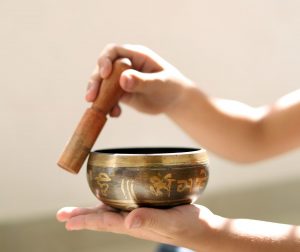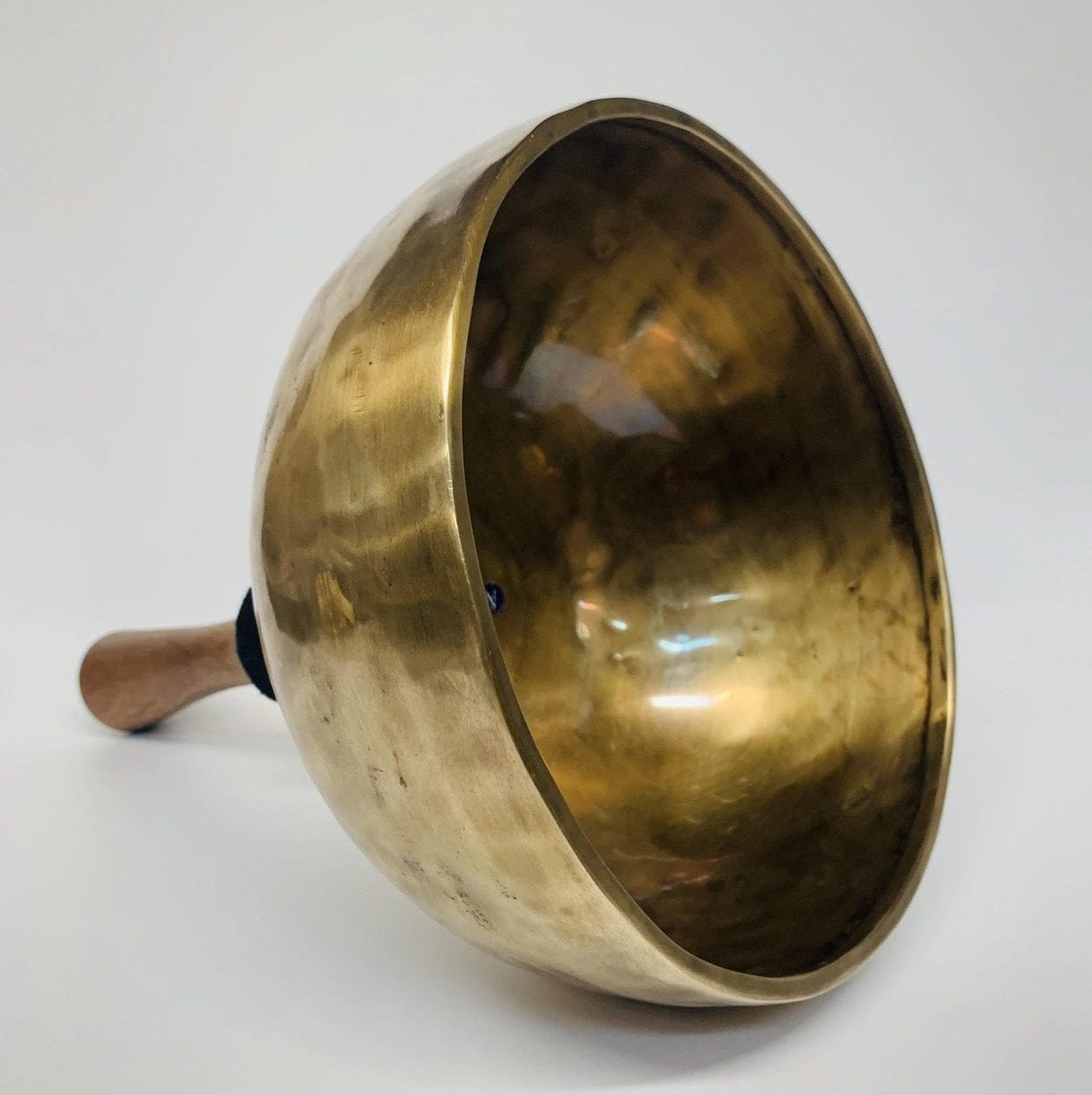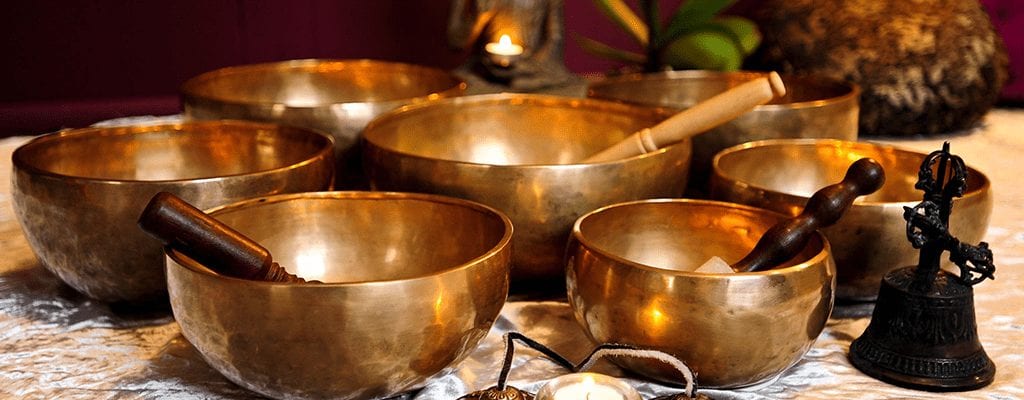What is a Himalayan Singing Bowl?
Barjon’s source purchases their bowls in the Himalayas from Nepali families that have been making them for generations.
Each bowl is attuned to the note of one of the main seven chakras in the human body. When played, the sound of the bowl flows through your aura and cleans your personal energy.
Full moon bowls are made and then “charged” in a way, where under the light of the full moon, Nepali bowl-making artisans and priests chant together inviting auspicious blessings as these hand hammered bowls. The energy of the full moon is known as a catalyst for releasing what is no longer serving.
How to Play a Singing Bowl

- Hold the singing bowl on the palm of the left hand. For smaller bowls, seven inches and under, hold on your fingertips.
- Grasp the mallet about mid-length, with all the fingertips pointing downwards and touching the wood. (If you are using one of our padded mallets, the red wool should be on top.) Palm downward.
- Gently tap the mallet against the side of the bowl to “warm-up” the bell.
- With an even pressure, rub the mallet clockwise around the outside edge of the rim of the bowl. Use a full arm movement, just like stirring a big kettle of soup, and keep the mallet straight up and down! Again, it’s not a wrist movement, but a full-arm movement.
Remember to apply pressure– the friction of the mallet against the outer rim produces vibrations which result in sound.
The Manakamana Singing Bowl

The Manakamana Temple located near Khandbari (Suren’s home village) is a little-known temple dedicated to the Goddess Manakamana. Unlike the larger, more famous Manakamana Temple west of Kathmandu, the Manakamana Temple on the Arun River is isolated and hidden quietly in nature, known to house is a powerful incarnation of the Hindu Goddess Durga Bhawani, known as Parvati. The combination of the two words Mana (heart) and Kamana (wish) means that the Goddess Manakamana guides one in fulfilling their heart’s wishes.
The Manakamana bowl is hand selected for quality of invitation sound and rubbing quality. Attached to these special bowls is a handle that has within it blessed water and Vibhuti (holy ashes) from the Manakamana Temple. In addition, each bowl has been resonated with a unique mantra and vibratory blessing.
What is the difference between metal and crystal bowls?
Metal singing bowls have been used for thousands of years ago in Tibet, the Himalayas, and also Japan. Because of their material, they have the very unique property of being able to produce multiple harmonic overtones in the same time. Because of this, it makes the music complex, vibrant, and warm.
Crystal singing bowls on the other hand is the more modern version of these tools and they are usually made out of quartz. And unlike the metal bowls, crystal ones will only produce one sound at a time. This is perfect if you are only aiming for only one specific tone. Keep in mind that these bowls are more fragile and can easily break compared to its metal counterpart.





